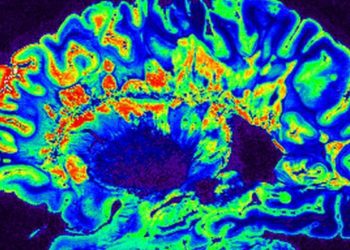The Scan by 2 Minute Medicine®: Declining Donations, Metals in Food, Unmasking the Mystery of MS and Cold Snap Safety:
01-23-2024
The Scan by 2 Minute Medicine® is a pop-culture medical newsletter and exclusive benefit for 2 Minute Medicine Plus subscribers.
Declining Donations
The Story: The American Red Cross has recently announced an emergency blood donation shortage, in part due to a rapid decline in the number of individuals donating blood.
What is Blood Donation?
Blood donation is the process by which an individual has their blood collected and subsequently processed to make it safer, and more usable for those needing blood. During a donation, about a pint of blood is donated, and after this time, an individual is tested to determine their blood type.
What is blood used for?
It is estimated that in the United States (US), a person needs blood every 2 seconds, with over 10 million units of blood transfused in 2021. These blood transfusions are used for a variety of reasons, including major injuries or surgeries where an individual loses large volumes of blood. In addition to acute incidents, blood transfusions are widely used to help individuals living with chronic illnesses. Individuals living with bleeding disorders may require blood transfusions to replenish coagulation factors and platelets, two key components necessary for blood clotting in response to injury or bleeding.
What challenges does this shortage pose?
Given that the amount of blood donations has reached a 20-year low, this represents a clear cause for concern. This presents many issues for healthcare, as patients may struggle to find blood matching the rarer blood types, while the consequences of using non-matching blood are fatal. This may even lead to cancellation or slowing of surgeries if adequate blood is not present, since this is a necessary component of some procedures.
Young adults and teenagers were often donating blood through high school initiatives, but in the wake of the pandemic, this became difficult. Also, more stringent requirements to protect the health of donors may have contributed to the steady decline in young donors. Past campaigns have aimed to increase the number of blood donations from younger donors, and although these efforts have slowed, it will be vital to recruit more blood donors to reverse these shortages and ensure that there is enough blood to supply hospitals, and those in need.
Metals in Food:
Over 60 cases of lead poisoning have been attributed to a recalled cinnamon applesauce brand, and the number of cases linked to this applesauce continues to increase. After extensive FDA testing, the potential culprit may be the cinnamon used in making the applesauce, which had more than 2,000 times the safe limit of lead.
This is especially concerning, due to the potential for lead poisoning, which occurs due to a buildup of lead in the body. Although this occurs primarily over time, young children are particularly vulnerable to the negative effects of lead poisoning. Lead poisoning may have significant impacts on the development of the brain, as well as kidneys and other organs within the body. Despite paints containing lead being banned in the US, recognizing symptoms of lead poisoning is important because unintentional exposure is still a risk. Symptoms in children include behavioral changes, hyperactivity, and fatigue.
The effects of lead poisoning cannot be reversed, but specialized medications called chelating agents can bind to lead in the blood and prevent the lead from causing damage to other organs. Many famous painters including Michelangelo, were suspected of having lead poisoning, due to the circumstances of their death and the risk of exposure due to lead being in many paints. While modern medicine has given us some medications, it is nevertheless critical to avoid exposure to lead and other toxic metals and to seek treatment at the first sign of symptoms.
Unmasking the Mystery of MS:
Recent evidence has shed light on the evolutionary spread of genes linked to multiple sclerosis (MS), a disease of the nervous system. Part of a class of diseases called autoimmune diseases, the latest evidence is prompting some to say that MS is not due to mutations. Instead, it is a result of an increasingly sterile environment that the ancient immune system is not accustomed to.
MS is a disease that affects the central nervous system, comprised of the brain and spinal cord. It is characterized by the breakdown of myelin, a protective substance surrounding some nerve cells, that helps to increase the speed of transmission throughout those nerves. Although the breakdown of myelin is typically mediated by the body’s immune cells, the exact causes are not fully understood. Symptoms of MS include vision problems, pain, numbness, and tingling, as well as muscle weakness and mobility issues.
The researchers believe that certain variations in the human genetic code were protective against pathogens carried by animals, but that these are no longer protective in the modern world. It is estimated that 2.5 million individuals worldwide live with MS, with individuals of Northern European descent having the highest risk of developing this disease.
A topic discussed in her Emmy Awards speech, actress Christina Applegate has shared her experience with multiple sclerosis, noting the difficulties associated with activities of daily life, including driving, and using stairs. Actress Selma Blair has also spoken about her battle with MS, marked by extreme pain and difficulty getting diagnosed. Diagnosis of MS includes blood tests and potentially imaging, though the recent discovery regarding the genetic basis of MS may inform future insights related to the diagnosis and treatment of this disease.
Cold Snap Safety:
Winter is upon many regions of Canada and the US, and with it comes snowstorms, and potentially record-breaking temperatures. Record low temperatures were seen in British Columbia and Alberta, while nearly 150 million Americans were recently under a cold weather warning advisory.
Although snow may be beautiful to look at, it brings with it some very severe risks. Fatalities related to the cold snap in the US have been reported, as well as power outages and severe disruptions. Cold temperatures can cause hypothermia, a condition caused by extended exposure to cold temperatures which results in an inability of the body to heat itself. Symptoms of hypothermia include severe confusion, pale and cold skin, and uncontrollable shivering. In some cases, frostbite may also occur. Frostbite is a serious injury caused by the freezing of nerves and blood vessels below the skin and often affects extremities such as the hands, ears, and nose.
Children and elderly individuals are at a particularly increased risk of developing frostbite since their bodies are less efficient at retaining heat than adults. Preventing hypothermia in these populations as well as adult populations is critical amidst harsh conditions that may not be normal in various regions. Layering clothing with wind-resistant outer layers, covering extremities with hats, scarves, and gloves, and avoiding substances that promote heat loss such as alcohol, caffeine, and nicotine, are all important ways to stave off hypothermia.
If someone is suspected of being hypothermic, action is required. Contacting the local emergency services, getting them indoors, offering clothing or blankets that are warm and dry, and offering warm drinks are effective ways to help someone who may be hypothermic. A recent game between the Kansas City Chiefs and the Miami Dolphins resulted in over 60 emergency calls related to hypothermia, highlighting the importance of staying safe during the cold winter, even while enjoying Travis Kelce and the Chiefs.
©2023 2 Minute Medicine, Inc. All rights reserved. No works may be reproduced without expressed written consent from 2 Minute Medicine, Inc. Inquire about licensing here. No article should be construed as medical advice and is not intended as such by the authors or by 2 Minute Medicine, Inc






